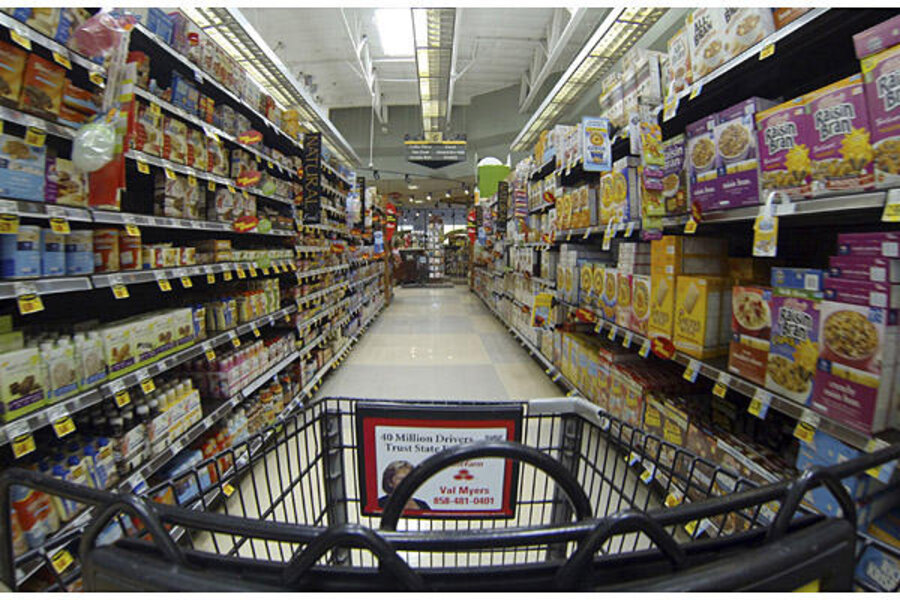Shopping begins and ends with 'price per unit'
Loading...
When I shop for garbage bags or toothpaste or something else that doesn’t really come with an expiration date, I really only use two criteria.
First, do I care at all what brand I buy?
Most of the time, I really don’t care. With an awful lot of products, I have found basically no difference between brands in terms of my usage. Shampoo? Body wash? Toothpaste? I’ll buy virtually any of them because I don’t see a major difference between them. I do see differences on a few items, such as garbage bags – I’ve had a few too many cheap garbage bags rip out on the bottom and leave me with trash all over the floor, so I am a bit picky there. Most items, though? I don’t care about the brand in the least.
Assuming I don’t care about the brand, the only thing that matters is the minimum cost per unit. I want to spend the least amount possible per ounce of shampoo or ounce of toothpaste.
Generally, I’ve found that the lowest prices tend to be either the generic or store brand or a bulk purchase at a warehouse store. Sometimes, a pharmacy will offer some combination of deals that will drag the price down to the point where I can save money there, but it usually involves a lot of extra work to chase those savings.
(A side note: this is where a “price list” comes in handy. I keep a list of the generic prices at my preferred grocery store on my phone and I use it for comparison purposes when I shop at the warehouse store so that I’m sure I’m getting the best deal. Over time, I gradually begin to know the baseline price of certain items.)
In either case, I simply buy the one with the lowest cost per unit. I’ll spend a moment calculating the cost per trash bag or the cost per ounce of shampoo in the package and go for that one.
For example, if I’m looking at a three pack of shampoo bottles with 32 ounces each for $10.99, I’ll add up the total ounces (96 ounces) and divide the total price by the number of ounces, giving me a price per ounce of 11.4 cents. At the other store, there might be a generic bottle of shampoo for $1.99, but it has sixteen ounces in it. That’s 12.4 cents per ounce. I’ll save about a dollar over the long haul by buying the bulk purchase.
However, if the price of the generic bottle was $1.49, that would give me a price per ounce of 9.3 cents, which would save me 2.1 cents per ounce. If I were to buy enough to match the bulk purchase, I’d save over two bucks by just buying six bottles of the generic.
One dollar? Two dollars? That’s not a big deal, some might say. The thing is, it’s not just about that single purchase. It’s about every non-perishable item that you purchase. Razor blades. Toilet paper. Shampoo. Soap. Toothpaste. Deodorant. Garbage bags. Hand soap. Baking soda. Dry pasta. The list goes on and on and on.
Not only that, this same issue pops up every time you purchase the item. We have five people in our home. We blow through soap and other items very quickly, even if we’re careful (I’ll talk about this in a minute). We go through the buying decisions for soap and shampoo and other items on a shockingly regular basis, even if we buy in bulk.
Let’s say we can save $2 by making a smart price-per-unit purchase every time we do it. Let’s say that we do it with twenty different items in our home, and we make one of those purchases every six months. That’s $80 a year – and I’m absolutely positive I’m grossly underestimating the frequency of purchases.
There is another problem with this, though. If you buy in bulk, sometimes you wind up with very large containers – and that makes it tempting to overuse. If you have a huge jug of shampoo, it’s easy to use a bit too much. If you have a huge jug of soap, it’s easy to put too much on your rag.
To combat this, I usually leave the large jug in the cupboard and refill a smaller jug out of that big one. Smaller containers usually makes it harder to waste too much. It takes just a moment and it often squeezes many more uses out of the same amount.
Thanks to that tactic, I can focus solely on the price per unit, and that ends up saving me quite a lot of money over a long period of time.








